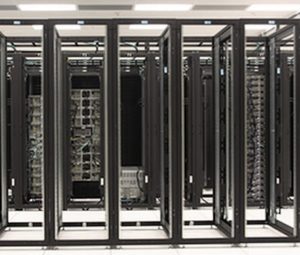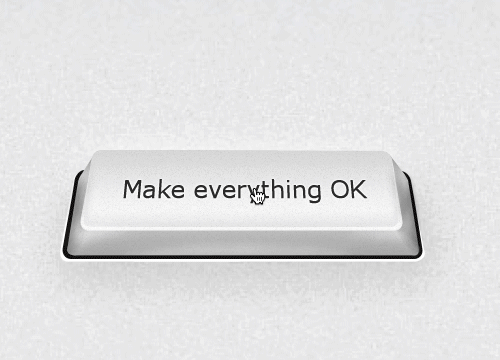In 2006 virtualization changed my work in IT completely. I adapted (with joy) and created value. Now it’s 2016 and the greatest disruption ever in IT is going on. As people and organizations are struggling more then ever, again I’m adapting. Why? Because what brought me here won’t get me there and I want to keep on adding value. How? That’s a good question and read this post to get some ideas, for free. First I’ll explain the difference between 2006 and 2016, and then give you nine proven tips on how to survive the rapidly changing IT jungle of today.
10 years ago: virtualization changed IT
Exactly one decade ago in 2006 I virtualized a complete datacenter in one of the big top clinical hospitals in The Netherlands. Around 120 physical severs became virtual in just over three months.
This was a huge and fantastic change for me. And of course there were also advantages for the business. This new platform made it possible to save a lot of time and work when building and maintaining IT systems for the doctors, nurses and the administrative departments. Maintenance during office hours became the standard. Sudden hardware problems did not really disrupt the work processes in the hospital anymore – including my own. The platform had an API so I started to automize the infrastructure.
I could finally get some sleep during the night, and do the important things that helped our doctors and patients during the day. Connect with them, understand their problems and create solutions. I really started making a difference.
Funt fact. At the same time a colleague of mine finished his project: building two bigger datacenters on the campus. You guess what happened: thanks to virtualization they stayed almost empty.
2016: cloud changes the business
It’s 10 years later and again there is a new disruption in IT. But this one is much, much bigger. The new (hyper scale) clouds and services do not mainly affect the IT guys, like in 2006.
This time the disruption changes company’s business models, the way we organize ourselves, the way people work. And even the way we live is affected. Everybody – also individuals – suddenly gets the opportunity to use advanced technologies as building blocks for their ideas. People’s imagination is their boundary.
In my job I see people, and therefore companies, having a hard time dealing with this change. The problems can be roughly devided into three categories:
- Current business models do not fit
- Organizational misfit
- Processes are not compatible
I’ll give you an example for each of them.
Current business models do not fit
IT service providers make money by selling IT infrastructure components and software, doing projects to build the infrastructure, operationalize them for five years, and start over. Every customer gets a different design using different products. This has been a great business for many years.
When customers want to start using one of the new cloud platforms and services, sales guys don’t know what to sell. Their first reaction was that they did not want to sell public cloud at all because it cannibalizes the company’s existing business. The next step was to sell parts of public cloud services (Microsoft Azure AD) in combination with products they were used to sell (i.e. third-party Multi-Factor-Authentication products). The result is a sub-optimal solution which is not always future-proof and/or have conflicting pricing models.
Organizational misfit
The way companies are organized often still dates from 15 years ago. The techies are separated in Microsoft and Virtualization- , Storage-, Backup-, Network-, Monitoring- and DBA/Linux teams. They all have their own manager.
And then you got the other departments: Account Management, Sales and Pre-Sales, Planning- & Control, Project Management, Service Management, Operation Management. Each of them with their own manager. So many managers..!
And somewhere in the end there you have the Customer, who gets the result of all the different interests of these managers. Managers who probably never even met the customer.
Processes are not compatible
The organization is based on the processes it wants to execute. These procesess bring in the money to create a healthy company to pay the salary of the employees every month. What I see is that a lot of these processes are built:
- on selling hours (do things by hand) – making more hours means you can ask more money.. :-/
- with the involvement of a lot of managers
Processes are not Lean so they take to much time and cost a lot of money. The result is the offered services are not competitive. Some of the brave people put in an real effort and change one process. This costs them a lot of energy as there are way to many managers involved. After doing this one time they think twice before doing it again. Sales always find their own way by just selling for less. After a deal is closed they hand over the problem of making money on the contract to the people of Service Management.
As long as there is no real pain felt (by the CEO, the Board, or the management team) this does not change. And there are way to many people involved to easily change things bottom-up.
Nine tips on how to survive the IT jungle
The problem with companies that exist for a few decades is that over the years they have these strong build in patterns who seem to be carved in stone. Changing these patterns is difficult. But if we wanted the company to survive in the years to come a change was needed.
“Expect nothing, blame no-one, do something.” (New York Jets locker room)
So we started to do the things we thought we had to do. Expect nothing, blame no-one, do something. And we succeeded. Here is a list of nine things that made the difference.
1 – Ask yourself the following question:
“How much time and mental space will I gain if I do not have to think about all of these IT infrastructural challanges. I.e. Exchange backup and PST files problems, upgrade of the VDI environment, replacing servers, buying new storage systems, maintaining your datacenters UPS systems..”
All the recent succesfull start-ups don’t have to put their energy in these type of questions. This is a direct advantage over their competitors. Answering this questions gives you awareness.
2 – Start thinking from the why and take a customer central approach
In november 2015 I visited Microsoft in Redmond and had the honour to have a talk with Scott Guthrie (Executive Vice President of Microsoft Cloud and Enterprise division). As I am really impressed with the change Microsoft as a company has made I wanted to learn more about this. I asked Scott what the most important thing was they did to achieve such a turnaround.
He told me that some years ago Microsoft started to see they were walking down a dead-end street. Continuing selling licences – and sending the Microsoft Compliancy Police – for operating systems, databases, Office and other software brought the company where it was then. However, cloud was going to change everything and their old business model would not hold. And this would mean Microsoft would die.
“If we at Microsoft kept on doing what we were doing, we would die.” Scott Guthrie November 2015
Microsoft changed their focus on the customer and started to think from the Why. Why would customers come to Microsoft and use their products? The Why of Microsoft nowadays is just one sentence: “To empower every people and organization in the world to achieve more”. That sounds inspiriing, doesn’t it? Really a different aproach from developing code for databases and then sell as much licences as you can.
You as a company or IT department can do this yourself too. Why do companies / the business / people want to come to you? Watch this video and get inspired.
3 – Prevent Active Inertia
Managers often get stuck in a rut, so when an entirely new situation arises they revert to old responses. Active inertia is “management’s tendency to respond to the most disruptive changes by accelerating activities that succeeded in the past”.
“What brought you here won’t get you there.”
Active inertia is a serious risk when you are going to make use of i.e. Azure, Office 365 or BYOD concepts. Understand where you want to go and let go of the old processes. Read more about Active Inertia here.
An example I’ve seen: a progressive thinking CEO wants to help the business to get a better user experience while using IT devices, and to become more productive working anyplace anytime. The CEO himself started using a Microsoft Surface Pro 4. This really made a change for him in his daily work, and he’d like to give the same experience to all the company’s employees. He orders some and hands them over to the IT department with the assignment to make sure the data is secure when people are using the device.
The IT guys revert to old responses:
- To access internet you need to setup a VPN connection to the companies network
- The device is managed, users can not install applications
- Applications via Citrix: the magic pen that comes with the Surfacebook does not work anymore
This great new device is reverted to the laptop the employees already use.
4- Start working with competence teams
Engineers working with a platform like Azure require a broad area of expertise and dedication. They need to know about networking and BGP protocols. Understand how the Azure IaaS platform works and this includes storage. Have knowledge of Azure Database Services and Azure Table, Azure Backup, monitoring, patching. And then there is all this new stuf: IOT hubs, the data lakes, machine learning. All of this is developing like crazy so everybody must be willing to continuously learn.
The members of the competence team are not only the technical guys. It helps if the complete chain from sales to operation is represented: account management, pre-sales, architects, service management. This helps getting a broad adaptation throughout the company.
5 – Create 1 to N solutions instead of customer specific solutions
Cloud is designed for delivering 1 to N solutions. So use it like that. Create best-practices and scripts you use for all of your customers. Keep these up-to-date as the technology changes continuously.
“Cloud is designed for delivering 1 to N solutions. So use it like that.”
Do you think it is possible to transfer 5.000 mailboxes from on-premises to the cloud just three weeks after you have spoken with your customer for the first time? We’ve done it re-using our best-practices.
Design for 1 to N. Deliver fast at low costs. You are the expert and create best practises to help customers. This is your added value.
6 – Automate your supporting processes
Stay competitive and automate everything you can. I’ve seen billing processes taking up to 140 hours per month for a service manager. Per customer. After automating the process this changed to 10 hours and less mistakes. Result was we got more trust AND more revenue AND more profit from the customer.
7 – Adopt agile and dev/ops methods
Azure was relatively unknown and constantly releasing new features. We knew where we wanted to go but it was hard to know upfront exactly what we had to do to get there. Writing Project Initiation- and Project Start Architecture documents – which all needs a broad consensus – would really hold us up and break the spirit.
We traded our tradional way of building infrastructures for Agile Kanban. The team was given a mission, they knew what was expected of them. The professionals in the team decided what to do when. They felt very responsible. We had to change our course now and then because Microsoft continiuosly releases new features we wanted to take advantage of. This would have been impossible using the old way.
The results came fast, and the customer is happy. No interference from Planning and Control. And no discussion afterwards that we didn’t follow the Project Start Architecture document, which would have been outdated before we even would have started.
8 – Use Cloud Services higher up in the stack
Cloud IaaS delivered by Microsoft is cool. It’s pay-per-use and you don’t need to break your brain over complex datacenter problems anymore. But you still have legacy apps, Windows operating systems, SQL databases. All of them need their security patches, version updates and upgrades. Maintenance is important but it’s costly, time consuming, sometimes risky, gives you downtime and it does not really add value to your business.
I got two sugestions for you to improve on this:
- Start using Azure SQL services, Azure tables, Azure web services. If your application is able to use Azure Tables your costs will go down drastically. A great example can be found here.
- Office 365 makes it possible to work anyplace anytime anywhere and share your data easily. You still want to secure your data which is not on-premises anymore. So this brings you the choice of using the tools from the partners you worked with for years and have a good relationship with, or do something different. The products were trying to keep up with the changing world, but they are always a one or two steps behind. So we did something different.We wanted to use integrated solutions specifically designed to secure data that is off-premises and make it easier to deploy BYOD concepts. Investing our time in understanding and using Azure EMS and Azure OMS helped us in getting the customer where they want to go.
9 – Synergize with your best customer
Doing something new means that you have to invest. It’s a new world out there and everybody has the same issue. If you are lucky enough to have a customer who wants to survive too and wants to get familiar with these new cloud platforms, you can join forces and synergize. Find a reason: TCO reduction, end-of-life for a datacenter or server hardware, business continuity, disaster recovery, a new workplace strategy.. Take a pick.
Define your goals, set-up a co-founded agile team and define priorities together. Do a retro-spective every two to three months and redefine the priorities. And celebrate your successes.
Wrapping up: do or die… or sell croissants
I believe that it does not matter if you are an IT Service Provider, a Cloud provider, a reselling partner, an IT department in a insurance company, a hospital or a retail organization.. If you do not adjust you will die.
And did we change the complete company? No, absolutely not. We started something new, laid down a strong foundation. Now things have to grow now step by step. Change is a process, not an event.
“Change is a process, not an event.”
Don’t like these changes and want to work in a business which does not have to deal with this? You can always start a traditional French boulangerie in a little French village in the Provence or Ardèche and sell great fresh croissants. People love and will always buy traditional bakery, but not traditional virtual machines build on-premises. I’ll visit you when riding my racing bicycle going from one old French village to the next enjoying the good life, which includes fresh croissants. Some things should never change.
“People love and will always buy traditional bakery, but not traditional virtual machines build on-premises.”

To get updated when a new post has arrived subscribe to the newsletter:







